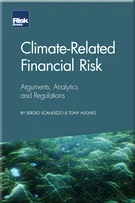Credit risk measurement and management
Introduction
Value-based management
The risk management and capital management frameworks
Credit risk measurement and management
Market risk measurement and management
Property and casualty insurance risk measurement and management
Life insurance risk measurement and management
Operational risk measurement and management
Economic capital
Regulation and regulatory capital
Ratings and rating agency capital
Conclusion: looking backwards and forwards
Acknowledgements
Glossary
4.1 INTRODUCTION
Credit risk is the risk of loss due to default or change in the credit quality of issuers of investment securities, borrowers of funds or counterparties to various transactions. The values of invested assets, loans and other transactions such as derivatives are affected by changes in the credit quality of the issuers, borrowers and counterparties. There are two main risk factors within this category.
Default risk. This is the risk that the issuer of the invested asset, the borrower of the funds or the counterparty to the transaction defaults and the investor or lender cannot get the full amount back. For example, the default of Lehman Brothers during the 2007–9 global financial crisis led to significant losses for the many companies that invested in the debts issued by Lehman Brothers or were counterparties to the derivative transactions with Lehman Brothers (Denison et al 2019).
Downgrade risk. Also known as rating migration risk, downgrade risk is related to deterioration in the credit quality of issuers, borrowers or counterparties such that the investor suffers a mark-to-market loss. For example, the downgrade of General Electric’s issuer credit rating from AAA
Copyright Infopro Digital Limited. All rights reserved.
As outlined in our terms and conditions, https://www.infopro-digital.com/terms-and-conditions/subscriptions/ (point 2.4), printing is limited to a single copy.
If you would like to purchase additional rights please email info@risk.net
Copyright Infopro Digital Limited. All rights reserved.
You may share this content using our article tools. As outlined in our terms and conditions, https://www.infopro-digital.com/terms-and-conditions/subscriptions/ (clause 2.4), an Authorised User may only make one copy of the materials for their own personal use. You must also comply with the restrictions in clause 2.5.
If you would like to purchase additional rights please email info@risk.net










